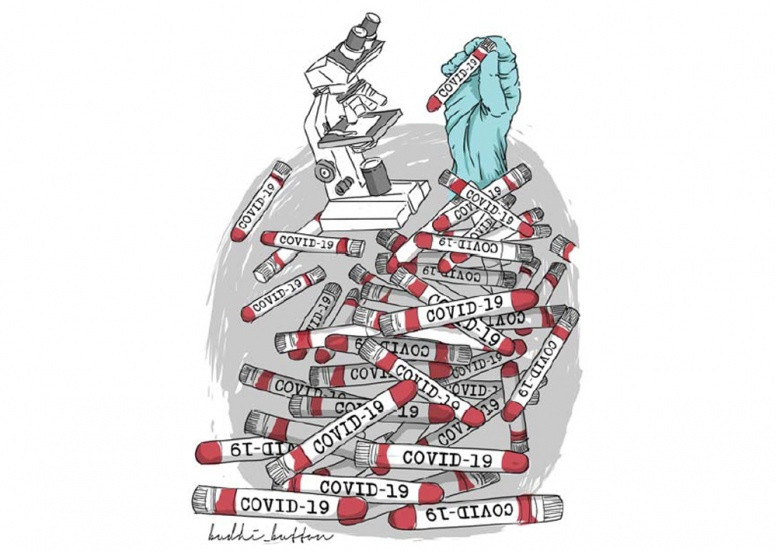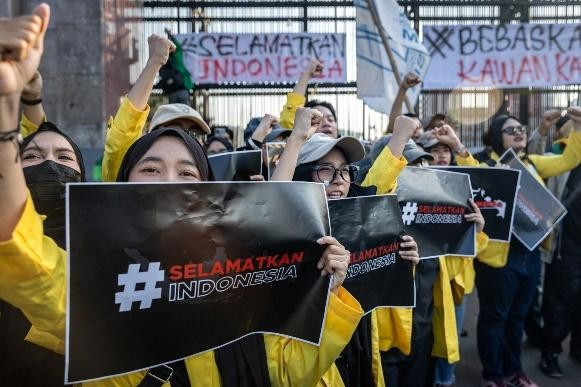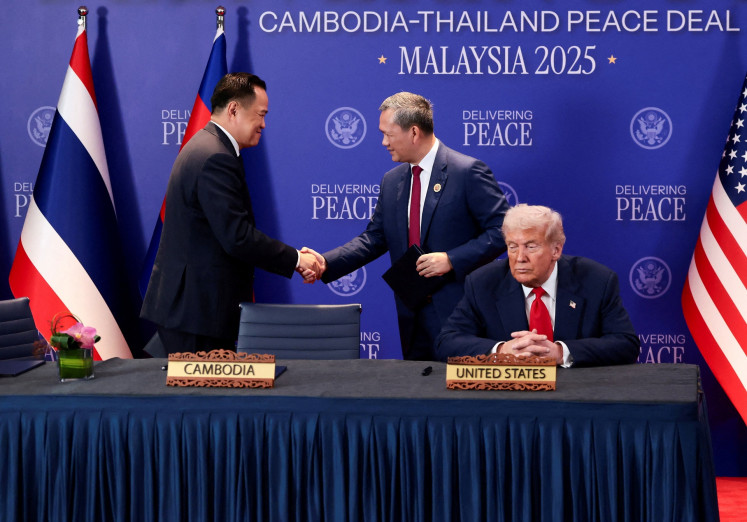Popular Reads
Top Results
Can't find what you're looking for?
View all search resultsPopular Reads
Top Results
Can't find what you're looking for?
View all search resultsMapping of laboratories urgent for mass COVID-19 testing
Change text size
Gift Premium Articles
to Anyone
I
ndonesia’s COVID-19 test ratio is still very low, leading to possibly misleading perceptions of a relatively low number of infections compared to those of other countries. This risks complacency on the part of the government and citizens.
At the urging of various experts President Joko “Jokowi” Widodo has requested 10,000 swab (polymerase chain reaction/PCR) tests to be conducted daily so the government can better asses the magnitude of infection, which has now reached almost the entire archipelago.
However, as expected, almost all countries are rushing to access the necessary testing kits and extractors. At the very least, the government can solve the issue of laboratories and the time lag between testing and results.
As of April 18, when confirmed cases numbered 6,248 in Indonesia, the number of tests conducted was only 39,422 with a case-pertest ratio of 144 tests per million according to Worldometers. In comparison, total cases in Singapore were 5,992 with 94,796 people tested — 16,203 tests per million people, while South Korea had 10,659 tests per million people.
Until mid-March COVID-19 sample testing was conducted solely by the Health Ministry’s Health Research and Development Agency (Balitbangkes) in Jakarta, as testing could only be conducted at a minimum standard biosafety level (BSL) 2 laboratory. Meanwhile, the Indonesian Institute of Sciences (LIPI) and several state universities had laboratories ranging from BSL 2 to 3, with BSL 4 as the highest level of pathogen protection.
The test results take two weeks, but with the rapid increase in suspected cases, fast, early detection through swab tests is urgent for quicker and more effective handling of suspected carriers and patients under surveillance. In several cases, patients died before their test results were known.
The length of the testing process is indeed an obstacle, both for hospitals as they treat patients and for the government as it tries to isolate and track suspected carriers. Moreover, the results of all rapid tests (using antibody-based kits) have to be validated through a swab test using PCR.
As the number of patients and the need for tests increased, the government eventually increased the number of laboratories allowed to test for COVID-19. By mid-April the government COVID-19 spokesman, Achmad Yurianto, said the Health Ministry had a nationwide network of 32 laboratories that could run a total of 5,000 tests daily but with a declining supply of reagents, a necessary substance in the testing process.
Does Indonesia really lack testing facilities?
Indonesia actually has the most testing facilities in Southeast Asia. The National Accreditation Committee (KAN) lists 1,366 testing laboratories and 71 medical laboratories. All of these laboratories have implemented competency standards adopted from international standards.
Unfortunately the COVID-19 testing can only be performed in the officially designated laboratories. Many laboratories are actually competent in supporting COVID-19 examinations. Most biochemical and biotechnology laboratories in tertiary education institutions have PCR tools for research purposes since the PCR technique is often used in gene analysis of humans, plants, animals, bacteria and viruses. Private biotechnology research laboratories are certainly more sophisticated.
So how can we have many more testing facilities that support COVID-19 examination?
Mapping laboratory competencies is the first prerequisite to answering this question. We need to identify existing resources before deciding whether to build, reconstruct or just equip a testing facility up to standard. The results of this mapping can be used as the basis for the appointment of more COVID-19 testing laboratories.
Collaboration is another solution to the lack of testing facilities. In addition to health centers and hospitals, the government should involve university and private laboratories. Collaboration can be more cost-effective compared to the provision of new laboratories and the new equipment that needs to be considered for their sustainability when the pandemic ends.
Also, collaboration in providing human resources is essential, as laboratory personnel for PCR testing are still very scarce. All personnel need to be equipped with personal protection equipment.
Third, the validity of the test results needs to be considered. As implemented by the United States’ Centers for Medicare and Medicaid Services, testing laboratories are required to first conduct self-assessment on examination of COVID-19 specimens, to ensure that the test results are accountable.
COVID-19 samples are very risky. At the very least, the testing facility must fully understand and implement laboratory biorisk management to minimize the danger both to laboratory workers and the safety of the specimen.
However, given massive demand for COVID-19 testing, countries around the world are scrambling for cartridges, reagents and raw chemical materials to perform tests. Indonesia’s current stock is said to be able to last to just one week, although the government ordered at least 23,000 cartridges earlier this month from the US.
Laboratory mapping may help to resolve this shortage. The government needs to identify which laboratories are competent to make reagents for the tests and to perform the diagnostic tests, allowing for variations in technique that should help protect the country against global shortages of reagents and equipment. Reagents and testing method validations are the key. Research and development must adapt accordingly.
If we knew our potential, we could probably meet our own needs. We could make reagents and perform COVID-19 diagnostic tests with different testing methods, possibly through collaboration between the government and biotech industries, as we can’t rely on other countries in this crisis.
Increasing the number of COVID-19 testing facilities will facilitate access to testing in various regions, enabling real-time transparency of results. Indonesia’s test ratio would thus improve. Increased testing of the population will lead to much more informed and targeted policymaking regarding the likelihood of the next phases of the pandemic.
We know that one of the keys to handling COVID-19 is the number of tests. As World Health Organization Director General Tedros Adhanom Ghebreyesus has said “test, test, test” so that countries will not “fight this pandemic blindfolded”. Hopefully, Indonesia can become a pilot country in rapid testing within Southeast Asia, where the number of tests will hopefully be proportional to the number of fully equipped testing facilities and personnel.
***
Postgraduate student in biomanagement at the Bandung Institute of Technology (ITB) and an employee at the National Standardization Agency (BSN). The views expressed are her own.











